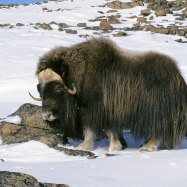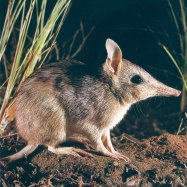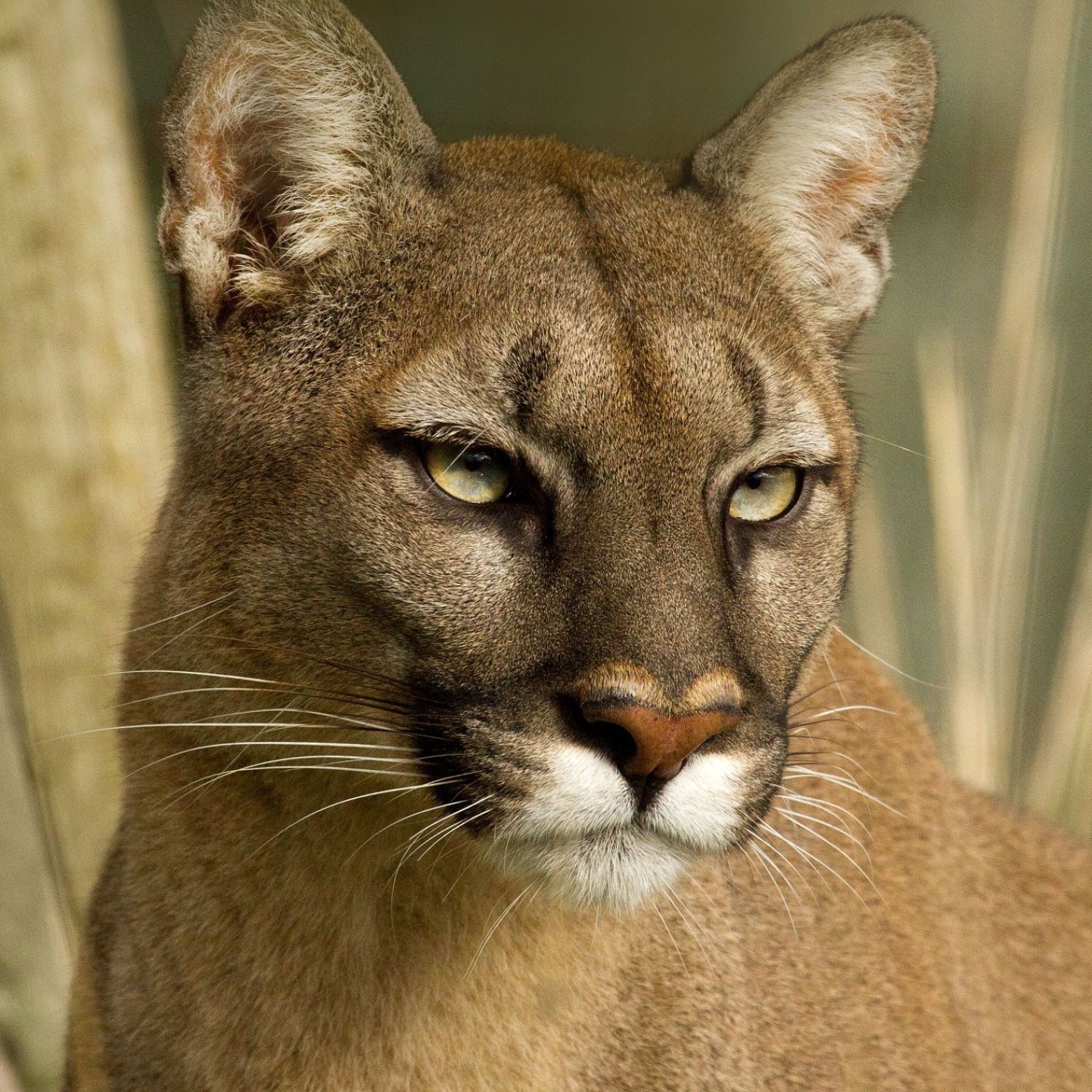
Puma
6 to 8 feet
The puma, also known as the cougar or mountain lion, is a large and powerful cat found in the American continents. With a sleek and muscular body, this feline can reach lengths of 6 to 8 feet. Part of the Felidae family, the puma is a skillful hunter with sharp claws and strong jaws. Spot one of these elusive creatures on your next outdoor adventure in the Americas. 🐆🌎🏞️
Animal Details Summary:
Common Name: Puma
Kingdom: Animalia
Habitat: Various habitats including forests, grasslands, and mountains
Welcome to the Fascinating World of Pumas – The Elusive and Powerful Big Cats
Puma, also known as the mountain lion or cougar, is one of the most fascinating and elusive big cats in the world. With its powerful and sleek body, it roams the diverse landscapes of the American continents, from the lush forests to the sprawling grasslands and even the rugged mountains. Despite its wide geographical distribution, spotting this majestic creature in the wild is a rare and thrilling experience.In this article, we will delve into the world of pumas, exploring their taxonomy, unique features, habitat, diet, and more Puma. So, buckle up and get ready to embark on an exciting journey into the world of these powerful and elusive cats.
A Closer Look at the Scientific Classification of Pumas
Pumas, scientifically known as Puma concolor, belong to the kingdom Animalia, making them a part of the animal kingdom. They are also classified under the phylum Chordata, which includes all animals with a spinal cord. Furthermore, pumas are a part of the class Mammalia, indicating that they are warm-blooded, have fur or hair, and produce milk to feed their young.Moving on, pumas are classified under the order Carnivora, meaning they are carnivorous animals that primarily feed on other animals. This puts them in the same category as other fearsome predators such as lions, tigers, and jaguars. Pumas belong to the family Felidae, which includes all felids, or members of the cat family.
The Habitat of Pumas: Where Do They Live?
One of the most fascinating aspects of pumas is their diverse habitat. These big cats can be found in various geographical areas, from the scorching deserts to the dense forests and even high-altitude mountains Pinacate Beetle. In North America, pumas can be found in the western United States, including California, Arizona, and Montana. They also have a presence in the Canadian provinces of British Columbia, Alberta, and Saskatchewan.In Central America, pumas are found in countries like Costa Rica, Nicaragua, and Panama. Moving south, these elusive cats can be found in the Amazon rainforest, the Andes mountains, and the Patagonian regions of South America. This wide distribution is due to their adaptive nature and ability to thrive in different environments.
Pumas prefer to live in areas with dense vegetation, as they use it to hunt and hide from their prey. They are also found in grasslands and mountainous regions, where they have mastered the art of ambush hunting. However, with rising human populations and urbanization, their habitat is shrinking, and pumas are increasingly coming into conflict with humans.
Eating Habits of Pumas – Carnivorous Diet
As mentioned earlier, pumas are carnivorous animals, which means their diet consists mainly of other animals. These big cats have a diverse palate and can hunt and feed on a wide range of prey, depending on their habitat. They are known to hunt deer, elk, moose, wild pigs, and even smaller animals like rabbits and rodents.Pumas are solitary hunters and ambush their prey by silently stalking it and then pouncing on it with a burst of speed. They are known for their powerful and agile bodies, which helps them to take down prey that is twice their size. Pumas are also known to have a keen sense of sight and hearing, making them efficient hunters.
Interestingly, unlike other big cats, pumas do not roar. Instead, they communicate through purrs, hisses, and growls. These vocalizations help them to lure potential mates and warn off other pumas from their territory.
The Fascinating Physical Features of Pumas
Pumas are known for their stunning physical appearance and powerful build. They have a sleek and muscular body, which allows them to be excellent climbers and quick runners. Their tan or beige fur serves as perfect camouflage in their natural habitat, and they are identified by their distinctive black markings, including their black-tipped tail.The average length of a puma is between 6 to 8 feet, with males being slightly larger than females. They can weigh anywhere between 100 to 220 pounds, with the largest recorded puma weighing a massive 276 pounds! Pumas have large paws with retractable claws, which enables them to grip and climb trees with ease.
One interesting fact about pumas is that they have a unique hunting technique. Unlike other big cats, pumas have the ability to sneak up on their prey and kill it with a single bite to the neck, severing the spinal cord. This efficient hunting technique is why pumas are known as one-shot killers.
The Conservation Status of Pumas: Are They Endangered?
While pumas have a widespread distribution and can adapt to different habitats, their population is facing significant threats. One of the main reasons for their decline is human interference. As cities and towns continue to expand, it leads to habitat loss and fragmentation for pumas. This forces them to come into conflict with humans, leading to retaliatory killings or capture for the illegal wildlife trade.Furthermore, pumas are also facing prey depletion, making it challenging to find food. With the rising demand for land for agricultural purposes, prey species are facing habitat loss, leading to a decrease in their numbers. This, in turn, has a significant impact on the puma population.
According to the International Union for Conservation of Nature (IUCN), pumas are currently listed as a species of "least concern." However, their numbers are showing a declining trend, and conservation efforts are needed to ensure their survival in the wild.
In Conclusion: The Importance of Protecting Pumas
Pumas are one of the most fascinating and elusive big cats in the world, with a wide distribution across the American continents. These powerful and agile predators play a crucial role in maintaining the balance of their ecosystems. They help in controlling prey populations and promoting healthy plant growth, ensuring the survival of other species in their habitat.However, with human interference and habitat loss, pumas are facing significant threats, and their numbers are declining. It is vital to raise awareness about the importance of protecting these magnificent creatures and their habitat. Initiatives such as creating protected areas and implementing sustainable land-use practices can go a long way in ensuring the survival of pumas in the wild.
So, the next time you venture into the forests or mountains of the American continents, keep an eye out for these elusive creatures. If you happen to spot one, consider yourself lucky and appreciate the beauty and power of these majestic big cats. After all, pumas are an integral part of our natural world and must be protected for future generations to experience their magnificence.

Puma
Animal Details Puma - Scientific Name: Puma concolor
- Category: Animals P
- Scientific Name: Puma concolor
- Common Name: Puma
- Kingdom: Animalia
- Phylum: Chordata
- Class: Mammalia
- Order: Carnivora
- Family: Felidae
- Habitat: Various habitats including forests, grasslands, and mountains
- Feeding Method: Carnivorous
- Geographical Distribution: North, Central, and South America
- Country of Origin: Multiple countries in the Americas
- Location: American continents
- Animal Coloration: Mostly tan or beige with black markings
- Body Shape: Sleek and muscular
- Length: 6 to 8 feet
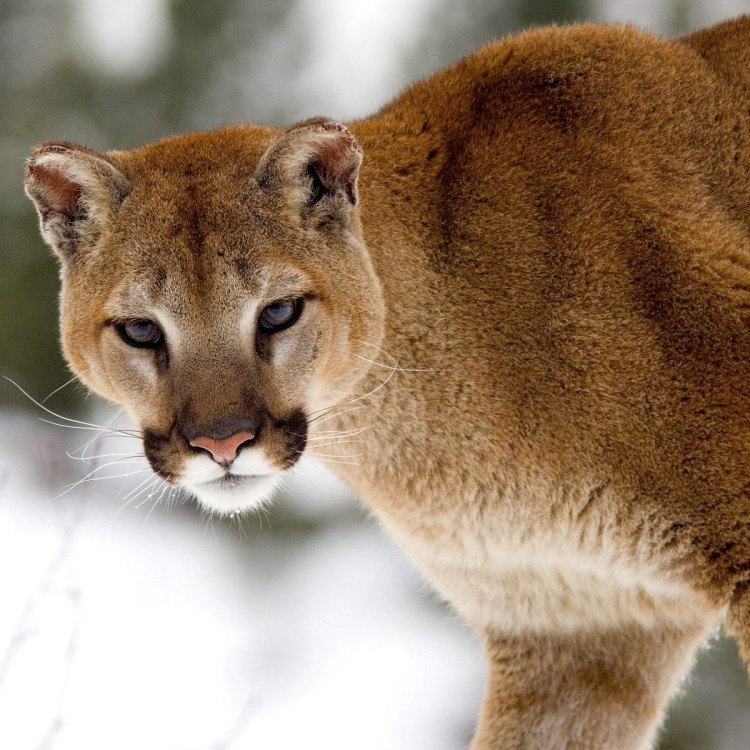
Puma
- Adult Size: Adult males weigh between 115 and 160 pounds, while adult females weigh between 64 and 100 pounds
- Average Lifespan: 12 to 15 years in the wild, up to 20 years in captivity
- Reproduction: Sexual
- Reproductive Behavior: Mating occurs throughout the year
- Sound or Call: Variety of vocalizations including screams, growls, purrs, and hisses
- Migration Pattern: Non-migratory, but may travel long distances to establish territories or find mates
- Social Groups: Solitary, but may form small groups of related individuals
- Behavior: Territorial and secretive
- Threats: Habitat loss, hunting, and conflicts with humans
- Conservation Status: Least Concern
- Impact on Ecosystem: Key predator in its ecosystem, helps regulate prey populations
- Human Use: Hunted for sport and fur in the past
- Distinctive Features: Powerful build, small head, round ears, and long hind legs
- Interesting Facts: 1. Also known as cougar, mountain lion, or panther 2. Can jump up to 18 feet vertically 3. Excellent swimmers 4. Have the largest range of any wild terrestrial mammal in the Western Hemisphere
- Predator: Mainly apex predator, but may be killed by larger predators such as bears or other big cats
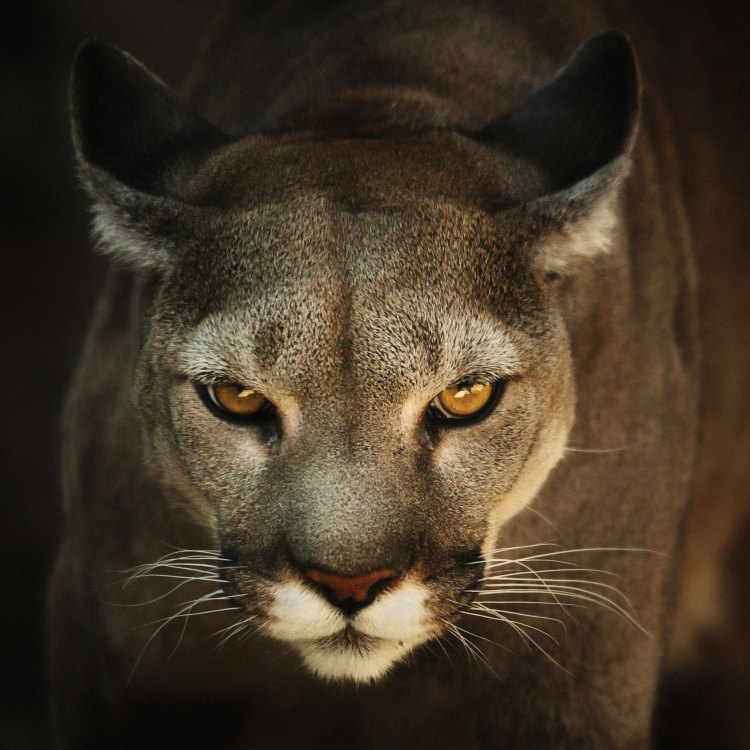
Puma concolor
The Fascinating World of the Puma: A Powerful Predator and Protector of Ecosystems
The puma, also known as mountain lion, cougar, or panther, is a magnificent and elusive creature found in the wilds of North and South America. It belongs to the Felidae family, which includes other big cats such as lions, tigers, and leopards. Despite its widespread distribution, the puma remains a mysterious and lesser-known species to many.But with its distinctive features, incredible abilities, and intriguing behaviors, the puma is a fascinating creature worth learning about PeaceOfAnimals.Com. Let's dive into the depths of its world and understand what makes this big cat so unique.
The Size and Lifespan of the Puma
One of the first things that come to mind when thinking about the puma is its size. Adult males can weigh between 115 and 160 pounds, while adult females weigh between 64 and 100 pounds. However, size can vary depending on the availability of prey in their territories.In terms of lifespan, pumas can live up to 12 to 15 years in the wild, and up to 20 years in captivity. This variation in lifespan is due to the lack of competition, predation, and environmental threats in captivity compared to the wild.
Reproduction and Sexual Behavior of Pumas
Pumas are sexually reproductive animals, meaning they require finding a partner to produce offspring. Mating can occur throughout the year, with males seeking out females by making vocalizations, marking their territory with urine and scratching trees, and following the female's scent.Once mated, the female will give birth to a litter of 2-4 cubs, which she will raise on her own Pygmy Hippopotamus. The cubs are born helpless and completely dependent on their mother for survival, and she will care for them until they are around one and a half to two years of age.
The Vocalizations and Migration Pattern of Pumas
Pumas are known to have a variety of vocalizations, including screams, growls, purrs, and hisses. These sounds serve as a way to communicate with other pumas and warn potential threats.While they are non-migratory creatures, pumas may travel long distances in search of territories or to find mates. This extensive range of movement helps maintain genetic diversity and prevents inbreeding.
The Social Groups and Behavior of Pumas
Pumas are primarily solitary animals and prefer to live and hunt on their own. However, there have been sightings of small groups of related individuals, such as a mother with her cubs still dependent on her.They are also territorial creatures and fiercely defend their territories from intruders. This behavior is crucial in protecting their food sources and ensuring the survival of their offspring.
Pumas are also known for their secretive nature, making them difficult to study in the wild. They are most active at dawn and dusk, known as crepuscular animals, and prefer to avoid human interaction.
The Threats and Conservation Status of Pumas
Like most wild animals, pumas face many threats in their habitats, including habitat loss, hunting, and conflicts with humans. The expansion of human development into their territories is one of the major reasons for the decline in puma populations.In the past, pumas were also hunted for their fur and as a form of sport, which greatly affected their numbers. However, thanks to conservation efforts and stricter regulations, the puma's population has been able to bounce back, and they are currently listed as "Least Concern" on the IUCN Red List.
The Role of Pumas in Ecosystems
Pumas play a crucial role in their ecosystems as a top predator. They help regulate the populations of their prey species, which in turn has a cascading effect on the entire ecosystem. Without the presence of pumas, the balance of prey species could be disrupted, leading to overgrazing and negative impacts on vegetation and other wildlife.Moreover, pumas control the growth of prey species, which helps prevent them from becoming overpopulated and competing for resources. As a result, the ecosystem remains healthy and in balance.
Human Use and Distinctive Features of Pumas
In the past, pumas were heavily hunted for their fur, which was used in the fashion industry. However, with the decline in their populations and stricter regulations, pumas are no longer hunted for their fur.The distinctive features of pumas include their powerful build, small head, round ears, and long hind legs. These features make them highly adapted to their solitary, stalking hunting style, where they rely on their agility and speed to take down prey.
Interesting Facts about Pumas
Apart from their unique characteristics and behaviors, the puma also has some interesting and lesser-known facts that make them even more intriguing.Firstly, did you know that pumas are capable of jumping up to 18 feet vertically? This incredible ability allows them to scale cliffs and trees with ease, making them excellent climbers.
Secondly, pumas are excellent swimmers, contrary to popular belief. They can swim for long distances and even hunt prey while in the water.
Thirdly, pumas have the largest range of any wild terrestrial mammal in the Western Hemisphere, covering over 110 square miles on average. This range allows them to maintain viable populations and helps reduce competition within their species.
The Puma as a Predator
The puma is undoubtedly a top predator in its ecosystem. Its stealth, agility, and powerful build make it a formidable hunter, and it is known to prey on a variety of animals, including deer, elk, raccoons, and even smaller predators such as coyotes.However, pumas can also become prey themselves. While they are mainly apex predators, larger predators such as bears or other big cats can kill and eat pumas.
In Conclusion
In summary, the puma is a fascinating and mysterious creature that deserves our attention and protection. With its distinctive features, intriguing behaviors, and crucial role in maintaining ecosystems, the puma is a powerful predator and protector of the wild.However, it is also important to understand that this apex predator is facing numerous threats and needs our help to ensure its survival. By conserving their habitats and respecting their space, we can all contribute to preserving the fascinating world of the puma for generations to come.
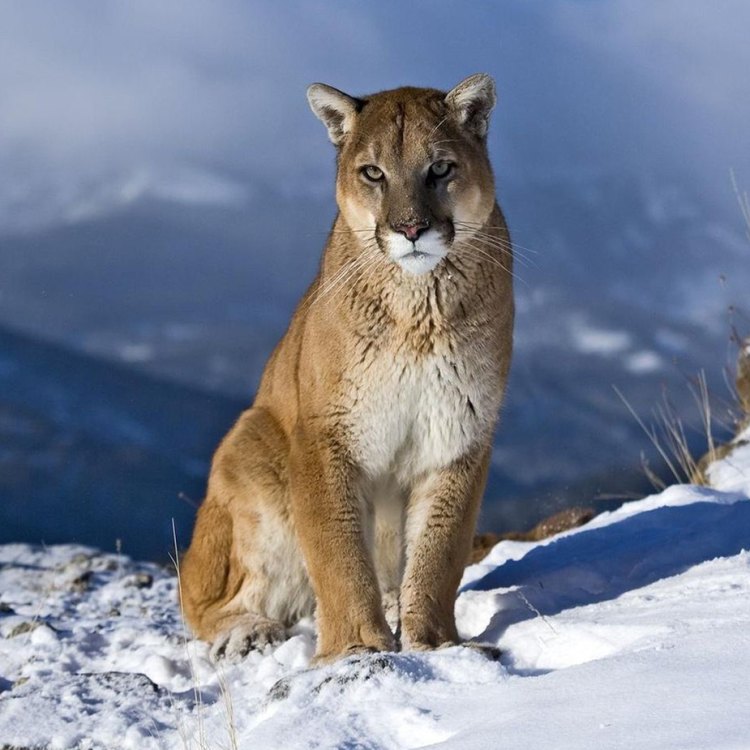
Welcome to the Fascinating World of Pumas – The Elusive and Powerful Big Cats
Disclaimer: The content provided is for informational purposes only. We cannot guarantee the accuracy of the information on this page 100%. All information provided here may change without prior notice.






